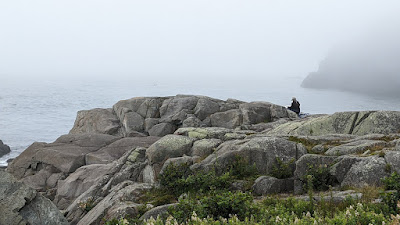 |
| I made these three 6x8 oil studies in the field in preparation for creating a large studio painting. Scroll down to the bottom of this post to see the finished painting. |
I admit, the lure of plein air painting is powerful. The smells, the sounds and, of course, the sights, draw us landscape painters like pheromones do a moth. I'd rather be painting outdoors than in the studio any day.
The moth may enjoy the momentary effects of a pheromone for its own sake, but ultimately, the pheromone has a higher reason for being: the perpetuation of the species. What about plein air painting? I enjoy the moment—a two-hour tussle with the landscape that lights up all the pleasure centers of my brain—but is there something more?
Some painters seem to think not. For them, plein air painting is an end in itself. If they can't paint outdoors, they don't paint. It's all about the sex and not about begetting the next generation. That is, it's all about the momentary satisfaction of “capturing the moment” but not about taking the art to a higher level.
I don't have a problem with this. We all have different goals. But what I do have a problem with is the swagger and brag of some of these plein air purists. They become plein air snobs. I want to pull them aside and say, “You know, if you spent some time in the studio addressing the issues that are difficult or impossible to deal with in the field, you'd be a better painter.” But they won't want to hear it.
I said I prefer to paint outdoors, and this is true. But I do value my studio time: Outdoors, we can only receive and respond; in the studio, we can also reflect and refine. Under the steady, unfailing light of my studio—a benefit you don't get in the field—and with the assortment of tools I have stored there, I can work out design and color issues and fine-tune these to better fit the idea behind my painting.
It's easy to get addicted to painting on-location, especially if you make it easy on yourself by having lightweight goals. Constant work within a certain set of restrictions—such as limiting your painting practice exclusively to the outdoors—will only help you reach the limits possible within those restrictions, but no further. For that, you need to move into the studio, where everything is possible.
By the way, do collectors care if a painting was done en plein air? Not really. They just want a good painting. They may enjoy the story behind a painting—perhaps you had to fend off wild wolverines while perched precariously on a cliff overlooking your scene—but that won't sell the painting if it's not good.
 |
| "Waterfall" 36x36 oil/canvas You can read the full story about this painting in my book, Outdoor Study to Studio, available from Amazon here. |















































